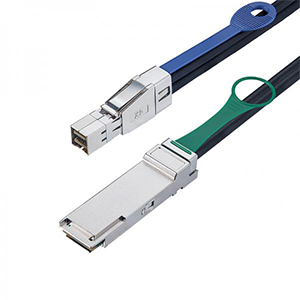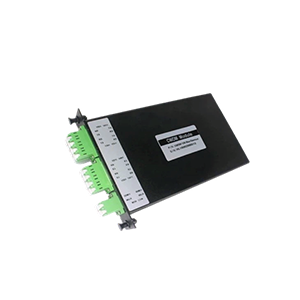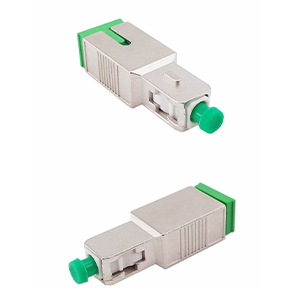Hello everyone! As an important transmission medium in network connections, Ethernet cable’s physical characteristics directly affect the stability and transmission performance of the network. Among the many Ethernet cable specifications, 26AWG Ethernet cable plays an important role in various application scenarios due to its unique physical and electrical characteristics.
Today, gracyfiber is pleased to introduce to you in detail the technical characteristics and application advantages of 26AWG Ethernet cable. We hope to help you better understand and choose the Ethernet cable that suits your network needs, and provide services for your digital transformation career. A valuable reference.
What is the AWG standard
AWG (American Wire Gauge) standard is a standard system that describes the diameter of wires. Let me give you a brief introduction:
The concept of AWG standards:
- AWG is a standard measurement used to describe the diameter size of wires/cables.
- It originated from a set of specifications developed by American copper wire manufacturers in the 19th century.
- The AWG standard uses a set of numbers from 1 to 36 to represent the thickness of the wire.
AWG standard describes the principle of wire diameter and thickness:
- In the AWG standard, the smaller the number, the thicker the wire, and the larger the number, the thinner the wire.
- Between two adjacent AWG numbers, the cross-sectional area of the wires differs by approximately 12.9%.
- The changes in AWG numbers follow a geometric sequence, so that a continuous scale can be constructed.
- You can quickly understand the actual diameter of the wire through the AWG number.
Wide application of AWG standards in cable manufacturing:
- AWG standards are widely used to describe the specifications of various types of cables and wires.
- Power cords, signal lines, communication cables, etc. will be marked with the AWG number used.
- AWG standards are simple and easy to use, helping manufacturers and users accurately select appropriate wires.
- This makes AWG an indispensable and important standard in the field of cable manufacturing.
Therefore, the AWG standard provides a continuous and standardized description system for wire diameter size, and plays an important role in the design, production and use of cable products. Understanding AWG standards will help you better select and apply various types of cable products.
Features of 26AWG Ethernet cable
Let me briefly introduce the main features of 26AWG Ethernet cable:
Physical dimensions and electrical characteristics of 26AWG Ethernet cable:
- 26AWG means that the wire diameter is about 0.4064mm, which is a thin cable specification.
- The cross-sectional area is approximately 0.129 square millimeters, and the maximum resistance is approximately 67 ohms/km.
- The outer diameter of the cable is generally around 5.5-6.5mm, which is relatively small and lightweight.
- Standard 26AWG Ethernet cable usually consists of 4 pairs of twisted wires.
Advantages of 26AWG cable in terms of flexibility, weight, etc.:
- Due to the thin wire, 26AWG cable has good flexibility and bendability.
- The cable itself is lightweight, helping to reduce the burden of installation and wiring.
- The compact size makes the 26AWG cable easy to store and thread, making installation more flexible.
- These characteristics make 26AWG cable more suitable for applications in small space environments.
26AWG cable performance in terms of transmission rate and distance:
- 26AWG cable supports Gigabit Ethernet transmission rates of 1000Mbps.
- Under the premise that DC resistance and the impact on digital signals are small, the transmission distance can reach about 70 meters.
- However, due to the higher resistance, the transmission distance of 26AWG will be reduced compared to thicker cables.
- Therefore, 26AWG cable is more suitable for relatively short indoor wiring scenarios.
In general, 26AWG Ethernet cable has advantages in terms of flexibility and ease of installation due to its small size and lightweight. Although the transmission distance is slightly limited, it can still meet the needs of most in-building network cabling and is a common Ethernet connection cable choice.
Application scenarios of 26AWG Ethernet cable
Let me share with you the advantages of 26AWG Ethernet cable in various application scenarios:
Advantages of 26AWG cable in small/concealed environments:
- Due to the smaller cable diameter, 26AWG is ideal for installation in small spaces, such as walls, floors and other hidden locations.
- Its soft and flexible characteristics enable 26AWG cable to better bypass obstacles and make the wiring neater and more beautiful.
- Compared with thick cables, 26AWG is lighter in weight, easier to install and fix, and will not burden narrow environments.
Use of 26AWG cable in mobile device connection and cabling:
- Many mobile devices such as laptops, routers, etc. are equipped with RJ45 network ports, and 26AWG cables are often used for network connections.
- The 26AWG cable is soft and lightweight, making it ideal for connecting these portable mobile devices without adding extra burden.
- In scenarios such as mobile offices and temporary wiring, 26AWG cables can provide flexible and convenient connection solutions.
Applications of 26AWG cables in the Internet of Things, smart homes and other fields:
- Internet of Things and smart home devices are often distributed in every corner, requiring highly concealed wiring solutions.
- The 26AWG cable is compact and lightweight, making it very suitable for insertion into the home environment to connect various devices to the network.
- At the same time, the cost of 26AWG cable is low, which is conducive to controlling the overall investment in the deployment of IoT devices.
- Therefore, 26AWG cables are widely favored in emerging application fields such as the Internet of Things and smart homes.
It is not difficult to see from the above that 26AWG Ethernet cable, with its compact, flexible, lightweight and concealable characteristics, has shown unique advantages in small space wiring, mobile device connection, and emerging application scenarios such as the Internet of Things and smart homes. . This makes 26AWG cable the first choice for widespread adoption in these areas.
26AWG Ethernet Cable Selection and Deployment
Let me explain the factors you need to consider when selecting and deploying 26AWG Ethernet cable:
Key considerations when choosing 26AWG cable:
- Transmission distance requirements: 26AWG cable is generally suitable for shorter distance transmission within 70 meters.
- Bandwidth requirements: 26AWG can support 1000Mbps Gigabit Ethernet, meeting most application requirements.
- Space limitation: 26AWG cable is small and flexible, which is beneficial for wiring in small spaces.
- Cost budget: 26AWG cable is relatively cheap and suitable for large-scale deployment projects.
Best Practices for Routing and Connecting 26AWG Cable:
- Pay attention to the bending radius when wiring to avoid performance degradation caused by excessive bending.
- In accordance with standard connection process specifications, use professional tools for connection and terminal production.
- Take measures to fix and protect cables to prevent them from being damaged during use.
- Properly plan the direction and installation method of cables to ensure that the overall wiring is beautiful and tidy.
26AWG cable maintenance and troubleshooting recommendations:
- Regularly check whether the cable connections are loose or damaged.
- Use network testing tools to check the transmission performance indicators of the cable, such as bandwidth, delay, etc.
- Once a performance problem is discovered, locate the fault point promptly and check whether it is a problem with the cable itself.
- If necessary, cable segments can be replaced or other remedial measures can be taken to restore network services as soon as possible.
In short, when selecting and deploying 26AWG Ethernet cables, it is necessary to comprehensively consider factors such as transmission distance, bandwidth requirements, space constraints, etc., and adopt reasonable wiring plans and maintenance strategies, in order to maximize the advantages of 26AWG cables and meet various needs. application scenario requirements.
Summary
To sum up, 26AWG Ethernet cable has unique advantages in application scenarios such as small/concealed environments, mobile device connections, and the Internet of Things due to its excellent physical characteristics and electrical performance. Its flexibility and light weight allow 26AWG cables to be flexibly deployed in complex layouts, while also meeting most network requirements in terms of transmission rate and distance.
When selecting and deploying 26AWG Ethernet cables, you need to comprehensively consider the use environment, application requirements and other factors, and follow best cabling practices to ensure the reliability of network connections. Our professional technical team is ready to provide you with a full range of Ethernet cable application support. If you have any questions during the selection or deployment of 26AWG cables, please feel free to contact us for communication.
26AWG Ethernet cable FAQ
26AWG (American Wire Gauge) refers to the thickness or diameter of the copper wires used in an Ethernet cable. It is a thinner and more flexible wire compared to the more common 24AWG or 22AWG Ethernet cables.
The main advantages of 26AWG Ethernet cables are their smaller size, lighter weight, and increased flexibility, which can be beneficial in tight spaces or for routing the cables.
26AWG Ethernet cables are often used in applications where space is limited, such as in-wall installations, behind furniture, or in cable management systems. They are also commonly used for short-run connections.
Due to the thinner wire, 26AWG Ethernet cables have a shorter maximum recommended distance compared to thicker cables. Typical maximum lengths range from 50 to 100 feet (15 to 30 meters).
While 26AWG cables can support Gigabit Ethernet speeds, they may have slightly higher signal loss and be more susceptible to electromagnetic interference over longer distances compared to thicker cables.
Yes, 26AWG Ethernet cables are designed to be compatible with standard RJ-45 Ethernet ports, as they use the same connector type.
You can typically identify a 26AWG Ethernet cable by its smaller diameter compared to 24AWG or 22AWG cables. Additionally, the cable may be labeled with the 26AWG specification.
26AWG Ethernet cables are available in various categories, such as Cat5e and Cat6, to support different Ethernet standards and performance levels.
Due to the thinner wires, 26AWG Ethernet cables may require more care when handling and terminating to ensure a secure and reliable connection.
26AWG Ethernet cables can be found at various electronics retailers, online stores, or specialty cable providers. It’s important to ensure the cables meet the necessary Ethernet standards for your specific application.




